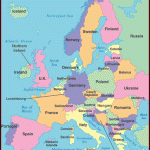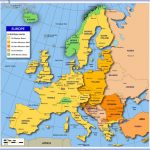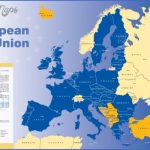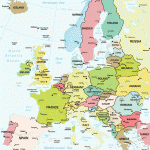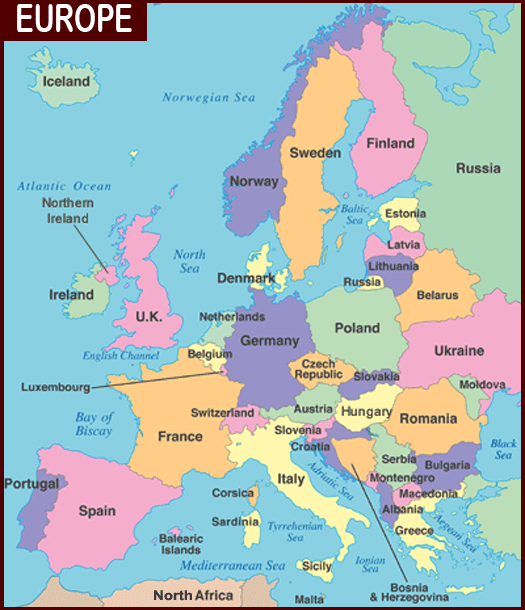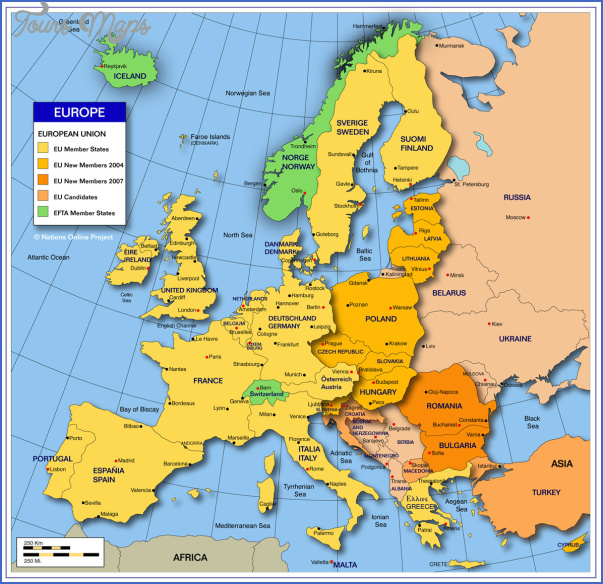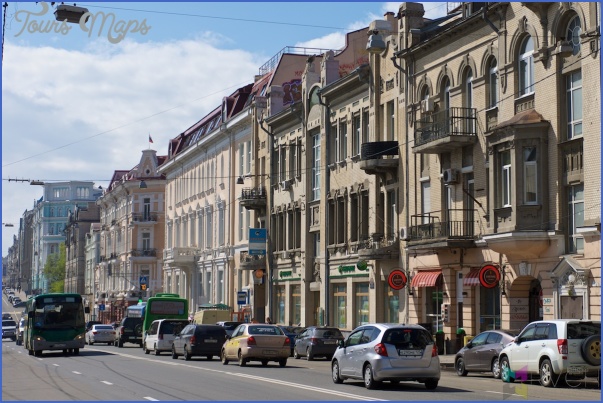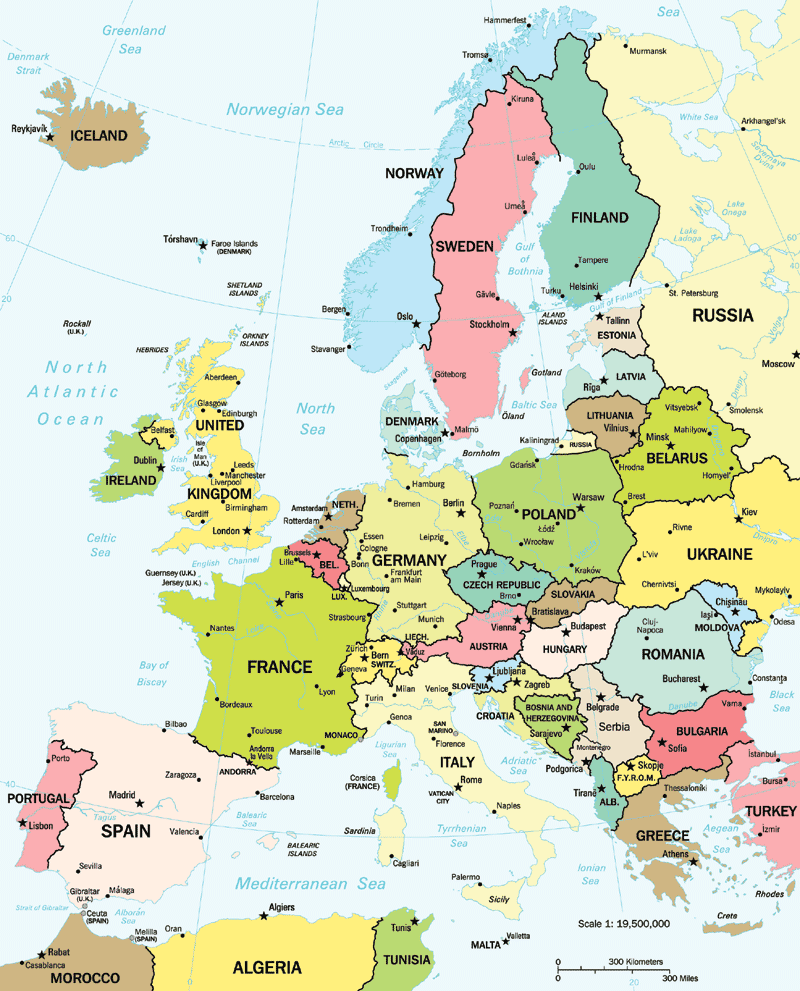WESTERN EUROPE TODAY: EUROPEAN UNION
The fall of the Berlin Wall in November 1989 symbolized the fall of communism and the end of the Cold War in the Western world. At the Treaty of Maastricht in 1991, the European Union was created from the European Economic Community, eliminating national barriers for the movement of goods, services, workers, and capital. Twelve EU members Austria, Belgium, Finland, France, Germany, Greece, Ireland, Italy, Luxembourg, The Netherlands, Portugal, and Spain adopted the euro (‚) as legal tender on January 1, 2002. And while concerns over xenophobia have been rising, thirteen Eastern European countries are currently undergoing the application processes to join the EU, further signifying the general European movement toward integration.
KNOCKIN’ ON EU’S DOOR
The Struggle for a European Immigration Policy
In June of 2003, 200 would-be European immigrants believed to have embarked from Libya drowned in the rough waters south of Sicily; that same month, 2666 migrants from Africa survived the journey, landing on the isolated Italian island Lampedusa and creating a study in contrasts in the ongoing EU immigration debate. In the annals of European immigration, tragedies of this caliber are far from rare: The Sicily drowning occurred three years to the month after 58 Chinese refugees were asphyxiated in a container lorry at the English port of Dover. Even the illegal immigrants who beat the odds and the border control do not always escape tragic circumstances. Many are forced into black-market labor, such as prostitution, to pay back smugglers for their passage. While it is fairly clear that current EU immigration policies are harmful to refugees, opening the floodgates on legal immigration is not only in the best interests of those seeking entrance it now appears that the EU needs immigrants as desperately as immigrants need the EU.
Western European birth-rates have crashed to an all-time low, averaging only 1.5 children per woman, and dipping as low as Spain’s scant 1.1. At the other end of things, Europe’s aging population has become a major strain on its pension systems. French Parliamentarian Elisabeth Guigou reports that, if present demographic trends continue, without relaxing immigration constraints, the mighty new 25-nation European Union will experience a net decline in population of 50 million people by 2050. Even now Europe is facing shortages in both its skilled and unskilled labor pools, making even more apparent its need for immigrants for economic prosperity to continue.
With so much at stake, it may seem confusing to witness the recent immigration policy swing to the political right experienced by much of Europe. Some of the most developed, prosperous nations, such as Germany and France, worry that an influx of immigrants will destabilize their economies and jeopardize publicly-funded medical and social programs. Tensions have been primarily focused on African and Arab ghettos, commonly seen as drags on the welfare state and
feared to be security threats in the wake of September 11. This explosive combination of fear and uncertainty has fueled the popularity of far-right populist political candidates running on anti-immigration platforms, spawning legislation severely restricting legal immigration.
During June-July 2003 at the Thessaloniki Summit, Germany, Britain, and Italy were the most vocal and influential players in the debate over how to manage illegal immigration while integrating legal immigrants. Some leaders, such as German Interior Minister Otto Schily, think agreements with countires of origin are the best way to curbing illegal immigration. Supporters of such efforts point to Italy’s bilateral agreements with Lybia, a hub for human trafficking from Africa to Europe, and Albania as models. In the former scenario, Italy will provide technical assistance to Libya, and the two countries will cooperate on offshore patrols. The 1997 Italian-Albanian cooperation deal contains a simplified repatriation scheme, quotas for seasonal workers, and joint patrols in Albanian waters of the Adriatic Sea that separate Italy and the former Stalinist state.
The stage is set for what promises to be an ongoing debate, as Germany leads the fight to retain autonomous control of its border policies while nations like Britain and Italy attempt to institute centralized, EU-wide control of immigration policy and enforcement. For the moment, a stopgap EU program intended to promote a tolerant and inclusive society by raising awareness of fundamental European values and to project accurate information about immigrants’ culture, traditions, and religion underscores the two-sided complexity of the situation. By educating immigrants in the cultural, social, and political characteristics of their adoptive state and providing EU citizens with accurate information about immigrants’ cultures there is hope that some of the elements of mistrust and misunderstanding that have plagued the discussion thus far can be mitigated, and that the frustrated desperation that costs the lives of so many refugees will give way to a peaceful, legal, and mutually beneficial solution.
Derek Glanz is currently earning a Ph.D. in political science and was an editor for Let’s Go: Spain and Portugal 1998.
WESTERN EUROPE TODAY: EUROPEAN UNION Photo Gallery
Maybe You Like Them Too
- Explore Southgate, Michigan with this detailed map
- Explore Les Accates, France with this Detailed Map
- Explore Góra Kalwaria, Poland with this detailed map
- Explore Gumdag, Turkmenistan with this detailed map
- Explore Telfes im Stubai, Austria with this detailed map

